The best siderates for sowing in the fall - after harvest, or in spring and summer - before planting the main crops
So, it is obvious that you are in the process of choosing green manures for autumn planting on your site after harvest, for example, you want to plant green manures after potatoes, tomatoes, carrots and beets, onions or garlic.
Most likely, you found what you were looking for.
Next, your attention will be presented with a list and characteristics (main advantages) of the best green manures that you can plant in your garden in the fall, after harvesting, or in spring and summer, before sowing seeds or planting seedlings.
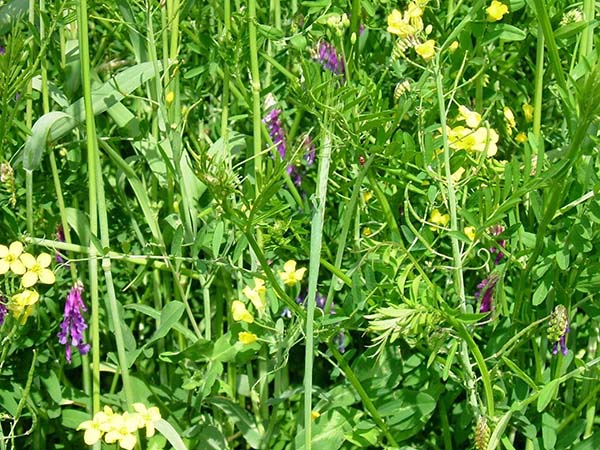
Content
What are siderates, how to sow and plow them correctly
Note! The site has a detailed article that reveals the advantages of green manure, as well as the timing, rules of planting and plowing green manure in the soil.

What are the varieties of siderates
Siderata can be divided into several groups (families):
- Cruciferous - white mustard, oil radish, rapeseed, rape (rape).
- Legumes green manure - vetch, lupine, pelushka peas, alfalfa, broad beans, clover, lentils, sweet clover.
Siderata contain on their roots colonies of bacteria - nitrogen-fixing - and strongly enrich the soil with nitrogen.
- Cereals - oats, rye, barley, annual ryegrass.
- Borage or hydrophilic - phacelia.
- Buckwheat - buckwheat.
Next, let's talk about the most popular and effective ones.
Video: the best green manure - organic fertilizers for environmentally friendly crops
Top 10 most useful green manures for sowing in autumn, spring and summer
White mustard as siderat
- Suitable for planting on all types of soil.
However! Mustard is quite demanding on light and moisture.
- Enriches the soil potassium and phosphorus by converting them into an easily digestible form, and gray.
- Suppresses weeds.
- Fights well (or rather, oppresses) with late blight, as well as with such pests as wireworm, nematode, bear, May beetle larvae and slugs (due to the presence of sulfur).
- Attracts beneficial insects (is a honey plant).
However! In the spring she can suffer from cruciferous flea.
And some gardeners even believe that mustard can cause an invasion cruciferous fleaif only one of the siderates is sown (which, in fact, is quite real).
- Ideal precursor for tomatoes, peppers, eggplants, potatoes (nightshade), carrots, beets (root vegetables).
Important! According to the rules of crop rotation, after mustard do not plant cabbage, turnips, radish, daikon, watercress and vice versa, since these are cruciferous crops.
However, some gardeners specially sow mustard for cabbage and get excellent results ...
Rape as a siderat
- Enriches the soil with phosphorus, potassium and sulfur.
Not suitable for planting on acidic, waterlogged and sandy soils.
- Suppresses weeds (weeds).
- Protects against pests (nematodes, slugs and wireworms) and diseases.
According to some reports, it is a good prevention of viral and bacterial rot.
- Suitable precursor for tomatoes, peppers, eggplant (nightshade), carrots, beets (root vegetables), squash, pumpkin, cucumber (pumpkin), beans, peas, soybeans, lentils (legumes), cereals.
However, after rapeseed you can not plant cabbage, turnips, radish, daikon, watercress and vice versa, since these are cruciferous crops, i.e. plants from the cruciferous family, which would be a violation of the basic rule of crop rotation.
Oil radish as siderat
- It binds nitrogen well, and together with vetch and other legumes it will perfectly accumulate it.
However, the culture is quite demanding on moisture.
- Helps in the fight against pests (wireworm, bear, beetle larva and nematode) and protects against bacterial and fungal diseases (various root rot and even late blight).
As in the case of mustard, often due to the oil radish appear cruciferous fleas…
- An excellent honey plant (but you need to dig up and use it as a green fertilizer before flowering).
- Suppresses weeds.
- The best precursor for growing carrots, beets (root crops), potatoes, tomatoes (nightshades).
After Maslenitsa are rare you can not plant cabbage, turnips, radish, daikon, watercress and vice versa, since they are crops of the same family - cruciferous.

Vika as a siderat
Interesting! Vika is also called "mouse peas".
- Saturates the soil with nitrogen (like all legumes).
- Helps to loosen the soil.
Not suitable for planting on excessively saline and acidic soils.
- A successful predecessor for almost any seedling.Ideal for cabbage (cruciferous), but also for beets, carrots (root vegetables), potatoes, tomatoes, peppers, eggplants (nightshades), cucumbers, zucchini, pumpkin (pumpkin), strawberries, herbs.
Advice! It is ideal to sow Vika together with oats, on which it can curl.

By the way! If you sow the vetch-oat mixture in the center and edges of the strawberry bed, you don't need to cover your garden strawberries for the winter. After the green manure grows up, they will successfully close the strawberry by freezing in the garden bed.
Important! Gardeners of the northern regions can sow vetch in August or early September, but for southerners - not earlier than October, otherwise the siderates can strangle garden strawberries.
Lupine as a siderat
- Enriches the soil with nitrogen (similar to vetch, since both are legumes).
- Makes difficult-to-digest phosphate compounds available to other crops (i.e. converts phosphorus and potassium into readily available forms for plants).
- Perfectly loosens the soil, making it less dense, improving the moisture holding capacity and moisture permeability of the soil.
- Reduces acidity.
- Scares off beetle larvae and wireworms.
- After this green manure can be planted and sowed cabbage (cruciferous), tomatoes, peppers, eggplants, potatoes (nightshade), cucumbers, zucchini, pumpkin (pumpkin).
But beans or peas after lupine should not be sown in any case, because the rule of crop rotation is violated, since both crops are legumes.
Peas as siderat
Field peas (pelushka) are sown more often.
- It grows very quickly.
- Enriches the soil with nitrogen.
- Makes difficult-to-digest phosphate compounds available to other crops (i.e. converts phosphorus and potassium into readily available forms for plants).
- It perfectly drains and loosens the soil, increasing its moisture and air capacity.
- Suppresses the development of weeds.
- Honey plant (plowing just the same is necessary during the period of flowering and fruit formation).
- Good precursor for cabbage (cruciferous), potatoes, tomatoes, peppers, eggplant (nightshade), cucumber, courgette, pumpkin (pumpkin).
But sowing beans after peas is not the best idea, because the main rule of crop rotation is violated (both crops of the same family are legumes).
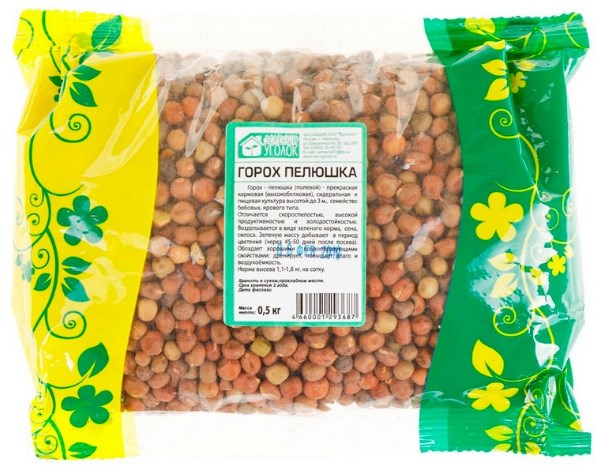
It is worth considering! Leguminous green manures will be much more expensive than cereals ...
Rye (rye) as siderat
- Saturates the soil with nitrogen.
- Makes phosphorus and potassium (phosphates) more available to plants.
- Loosens perfectly.
- Most effectively contributes to the suppression and suppression of weeds (it can even cope with the field thistle, wheatgrass).
Rye is best planted separately, because she does not like the neighborhood with other siderates (she will simply crush them).
- Promotes the prevention of fungal diseases (has disinfecting properties) and repels pests (nematodes).
- Ideal as a predecessor for potatoes, tomatoes, peppers, eggplants (nightshades), cucumbers, zucchini and pumpkin (pumpkin seeds).
By the way! Rye is a very affordable green manure. However, it is very difficult to plow it ... unlike oats.
Oats as green manure
- Saturates the soil with phosphorus and potassium, more precisely, makes it readily available, to a much lesser extent with nitrogen.
- It loosens very well and improves air exchange in clay soil.
- Eliminates weeds.
- Helps suppress root rot, protect against bacterial and fungal diseases.
- An excellent precursor for potatoes, tomatoes, peppers, eggplants (nightshades), cucumbers, zucchini, pumpkin (pumpkin seeds).
Sow together perfectly with Vikato saturate the soil with nitrogen.
By the way! Oats are another fairly economical green manure, although they are more expensive than rye. But it is much easier to wrap around it than rye.
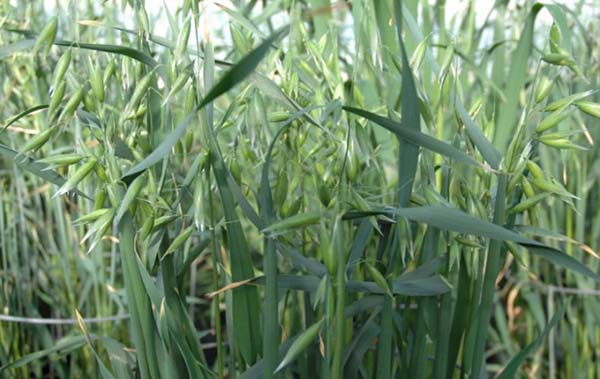
Phacelia as a siderat
Most universal green manure, which is a representative of the borage family, to which not a single garden crop belongs. This means that phacelia - excellent predecessor for all culturesbecause the rules of crop rotation simply cannot be violated.
However, the price is not very encouraging, but the beneficial effect is more than attractive.
- Suitable for sowing on all types of soil (heavy - loosens well, and light soil, on the contrary, perfectly strengthens).
However! Demanding on moisture.
- Attracts beneficial insects (it is an excellent honey plant).
- Helps to reduce soil acidity.
- Suppresses weed grasses (especially wood lice or biting midge).
- Helps in the fight against pests (wireworm and nematode) and protects against bacterial and fungal diseases (various root rot and even late blight).
Advice! You can plant and grow phacelia directly in potato aisles or along the edge of the tomato beds and other vegetables.
Buckwheat as siderat
Another universal green manure along with phacelia.
- Unpretentious in cultivation (grows well in the shade, on excessively sandy soils, is able to tolerate drought, is not affected by diseases or pests).
- Saturates the soil with hard-to-reach phosphorus and potassium.
- Reduces soil acidity.
- Makes it lighter, creates good moisture and air exchange in the soil at great depths.
It is especially effective on heavy soils.
- Suppresses weeds.
- Eliminates pathogenic microorganisms (especially root rot) from the soil.
- A wonderful honey plant.
- An excellent precursor for any crops other than acidic, i.e. sorrel, spinach, rhubarb.
The best green manure for sowing under fruit crops.

What green manures to plant before and after certain crops
Naturally, before sowing green manure, you should decide:
- Why are you sowing siderateswhat do you want to saturate the soil, from what pests and diseases it will be necessary to protect future plantings, including decontaminating the soil.
It is quite obvious that after tomatoes and potatoes green manures should be planted, which help disinfect the soil, suppress phytophthora fungi and saturate it with nitrogen... Therefore, your choice is these are mustard, oil radish, oats, buckwheat (against late blight), and rye, alfalfa or phacelia (for saturation with nitrogen).
- What vegetables are you going to grow in this garden next year, it is very important that these were not cultures related to siderates, since according to the rules of crop rotation, they cannot be planted in one place several times in a row.
This is about cruciferous (cabbage, radish, turnip, daikon) and legumes (peas, beans, soybeans, lentils) crops.
What green manure to sow after potatoes, onions, garlic, tomatoes, cucumbers, strawberries
Interesting! You can even find special green manure mixtures for sowing before or after certain crops:
However, if you read general article on green manure, you will find out that planting a mixture of different green manure is not the best ideasince the stronger simply overwhelm the weaker. Wherein exception is sowing wicky and oats. It is much better, for example, to plant phacelia first, then vetch, then oil radish, then white mustard and - winter rye or oats.
- Siderata after potatoes (you can sow before planting tubers in the ground) - rye 35%, vetch 20%, mustard 15%, radish 15%, rapeseed 15% (for the accumulation of nitrogen in the soil due to legumes and the removal of soil diseases and pests due to cruciferous green manure , creating a large amount of bioorganics).
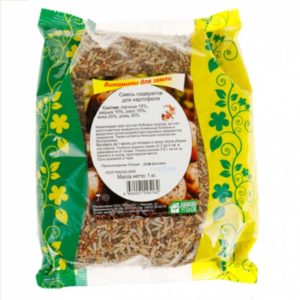
- Siderata after Luke - lupine 20%, rapeseed 15%, vetch 20%, mustard 15%, oil radish 15%, rye 15% (to suppress soil pathogens and pests, increase fertility and improve the soil structure).
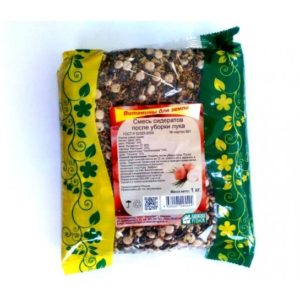
- Siderata after garlic - vetch 30%, oats 20%, rye 20%, mustard 15%, rapeseed 15% (to suppress soil pathogens and pests, increase fertility and improve the soil structure).
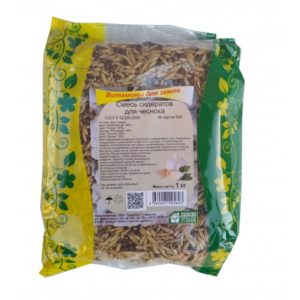
- Siderata after tomato (eggplants, peppers, i.e. nightshades) - peas 25%, lupine 20%, mustard 20%, rapeseed 20%, oil radish 15% (for soil decompaction, nitrogen accumulation due to legumes and removal of soil diseases and pests for account of cruciferous crops, creating a large number of bioorganics).

- Siderata after cucumbers - vetch 25%, peas 25%, mustard 20%, oil radish 15%, rapeseed 15% (to improve the structure of the soil, remove soil pests, suppress harmful pathogens, reduce the growth of weeds and accumulate nutrients of the crop).
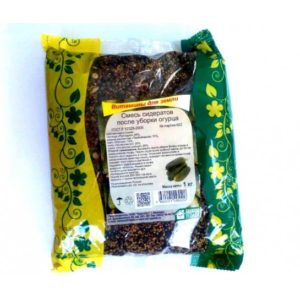
- Siderata after carrots and beets- vetch 30%, mustard 20%, rye 20%, oil radish 15%, rapeseed 15% (to improve the physical and mechanical properties of the soil, accumulate moisture due to porosity of the soil, remove soil pests, reduce the growth of weeds and suppress harmful pathogens).

- Siderata after cabbage (sowing can be done before planting seedlings or sowing cabbage seeds, i.e. in April-May, or after harvesting early varieties of cabbage) -lupine 30%, vetch 30%, oats 20%, rye 20% (to improve physical and mechanical properties soil, removing soil pests and remaining pathogens, reducing the growth of weeds, and accumulating nutrients).
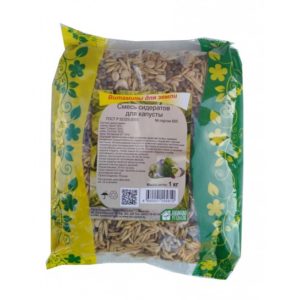
- Siderata after strawberry (including before - preferably at the end of summer or early autumn) - vetch 30%, lentils 20%, oats 20%, mustard 15%, radish 15% (to improve the physical and mechanical properties of the soil, remove soil pests, reduce the growth of weeds plants).
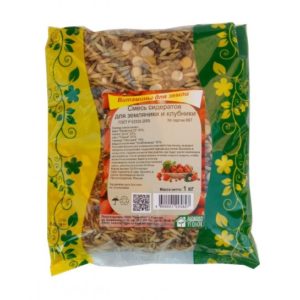
Well, now you know which green manure is better to sow in autumn, after harvest (or in spring, before planting a certain crop) in order to restore soil fertility (due to the accumulation of nutrients and improve physical and mechanical properties), in order to remove soil pests, suppress harmful pathogens, reduce the growth of weeds.
Video: 7 best siderates

